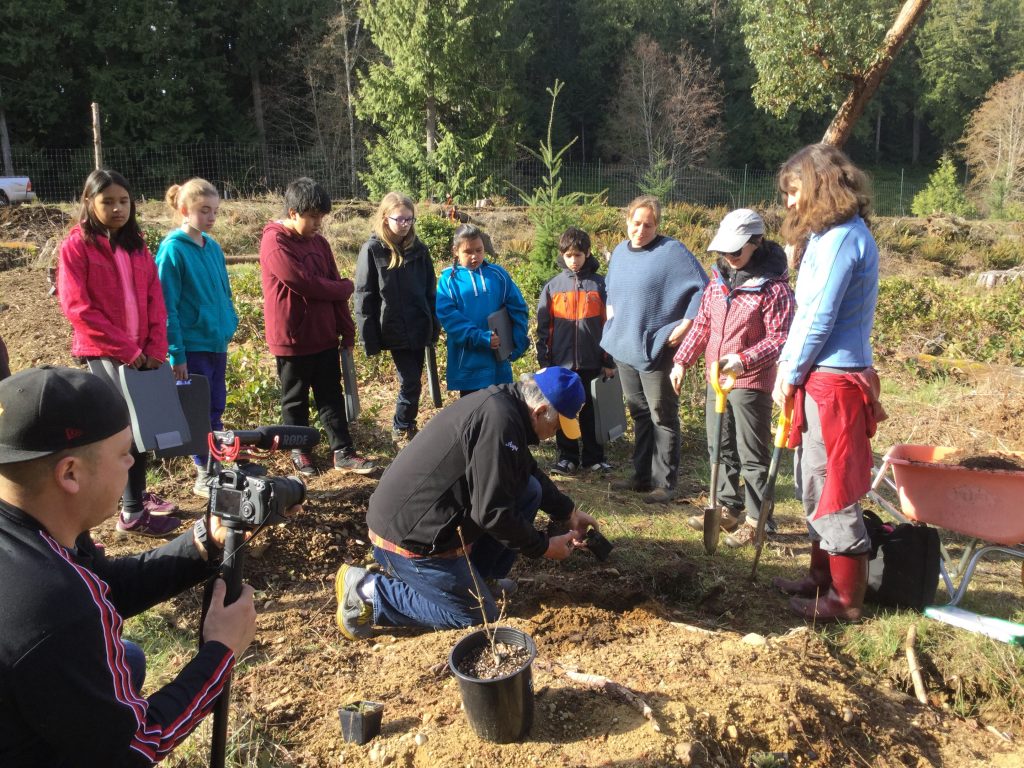Maps and Brochures | September 1, 2020
Nuts’a’maat’ Foraging Guide
An illustrated guide to foraging in the Nuts’a’maat’ Forage Forest
ViewThe Nuts’a’maat Forage Forest is an eco-cultural restoration project that reimagines the relationships we can have with damaged ecologies and with one another as we work together on the land. It is a shared space where we are restoring and caring for an indigenous forest ecosystem that provides us with a diversity of important foods and medicines.
The project lives within the unceded, asserted, and shared traditional territories of the Hul’qumi’num-speaking First Nations Peoples and those who hold traditional rights, responsibilities, and Indigenous rights and title in and around what is now known as Galiano Island. It is a collaboration between the Galiano Conservancy (GCA), Access to Media Education Society (AMES), members of the Penelakut First Nation, and the Galiano Island community.

The Nuts’a’maat Forage Forest is home to more than 50 species of edible and medicinal native plants. The site is located at the Millard Learning Centre and accessible to the public year-round. A trail map and deck of native plant cards for assistance with plant identification and Hul’qumi’num plant names are available at the entrance to the site.
Please tread lightly when you visit the Forage Forest. The plants are tended by GCA staff and volunteers and are intended primarily for harvest during community feasts and education programs. If you decide to harvest for personal use, please leave plenty behind for others to ensure future harvests. Do not harvest any plant unless you are familiar with the species and protocols – the GCA is not responsible for any harm arising from the harvest or consumption of plants in the Forage Forest.

If you’d like to get involved in the Nuts’a’maat Forage Forest, we host a volunteer day on the First Friday of each month.
For school groups, check out our Native Plant Inspirations program. Check out our volunteer opportunities for more information.

The Nuts’a’maat Forage Forest is an evolving project that has involved many people and organizations. Learn how it came to be, and what its future may be.

The Nuts’a’maat Forage Forest has evolved over the years, and so many people have helped it to grow. You can explore this transformation through media.
Set to Mort Garson’s “Plantasia,” and produced using SketchUp, this 3D walkthrough imagines the Nuts’a’maat Forage Forest after 25 years of growth, and what it might be like.
Produced by the Access to Media Education Society (AMES), this short video tells the story of the creation of the Nuts’a’maat Forage Forest.
Explore the following resources to learn more about the Nuts’a’maat Forage Forest.
An illustrated guide to foraging in the Nuts’a’maat’ Forage Forest
ViewA digital field guide to celebrate wild food and medicine in the Salish Sea, produced by the Access to Media Education Society
ViewReport from UVic’s ES 471/ER 412 Class of 2019.
ViewVoicescu, 2018 – UVic Co-Op Report
ViewPark et al., 2018 – Restoration Ecology
ViewPark & Higgs, 2018 – Environmental Monitoring & Assessment
ViewReport from UVic’s ER 412 Class of 2018.
ViewHuggins, 2017 – RNS Capstone Project
ViewPark, 2016 – Masters Thesis
ViewReport from UVic’s ES 441 / ER 411 Class of 2016.
ViewReport from UVic’s ES 441/ER 411 Class of 2015.
ViewNotifications